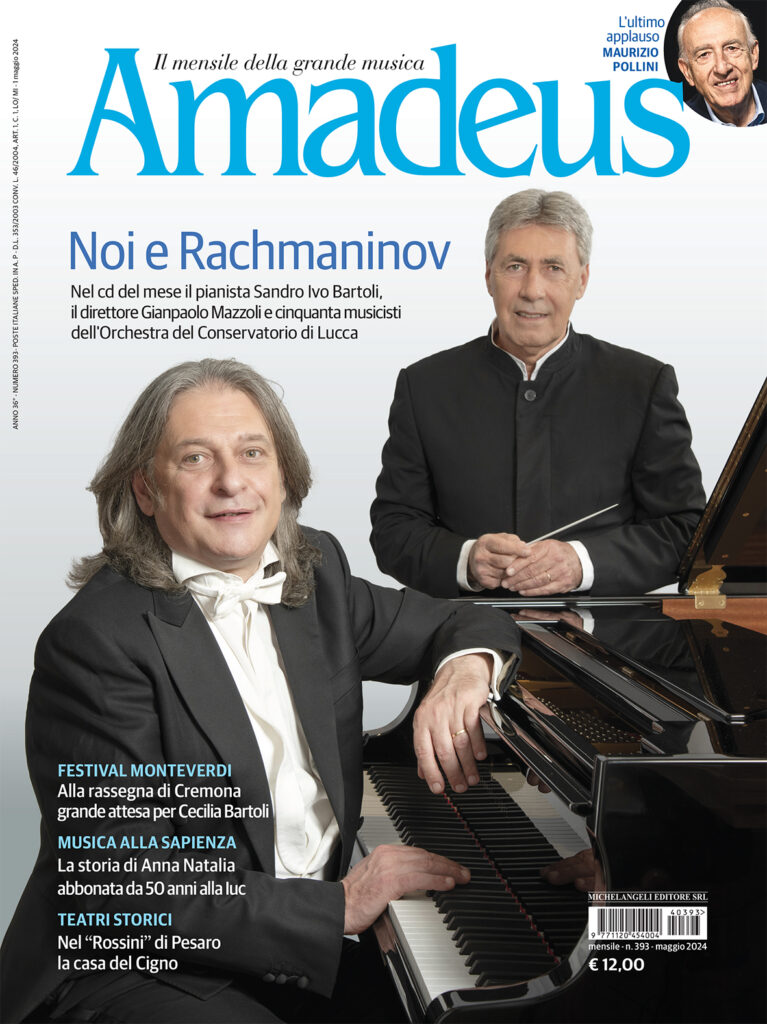“A whirlwind of emotions” would hardly be an exaggeration to describe my life over the past few months. Losing my elderly mother in September was, as one might expect, a heavy blow. Yet in a musician’s life, “the show must go on”—and there was no real time to grieve.
Preparing for Milan
I had spent the summer practising and researching the concertos of Niccolò Jommelli, Francesco Durante and Domenico Cimarosa, in view of performances scheduled in Milan for October and November. Meanwhile, a short tour of the USA was tentatively planned, though the uncertainty surrounding my visa kept everything up in the air. The work was engrossing, though far more demanding than I had foreseen.
These concertos—some of the earliest examples of the “piano concerto”—presented difficulties from the outset. Written in the mid-eighteenth century, during the transition from the harpsichord to Cristofori’s Florentine piano, they were undoubtedly written for the composers’ own use. The maestro al cembalo both led the ensemble and played the solo part, which meant there was no need to write out the solo fully. What survives is little more than an elegant skeleton: sketches upon which the composer would improvise his embellishments.
Reconstructing this practice today is both thrilling and daunting. The surviving clues are scattered through treatises and chronicles, and for every decision there lurks the risk of going too far. With the complicity of my editor at Zecchini, I documented much of this research in a long article published in the October and November issues of MUSICA magazine (Italian only, but available on the magazine’s website).
Scarlattiana and the Italian Concerts
A special companion to these early concertos was Alfredo Casella’s Scarlattiana—a “Divertimento on music by Domenico Scarlatti”—a work I first played what feels like a lifetime ago. Approaching it now as a Scarlatti scholar revealed new layers of Casella’s mastery.
On October 12th we performed in Roncade for the grand finale of Sile Classica, the festival founded by my brilliant young colleague Elia Cecino. The Insubria Chamber Orchestra under Giorgio Rodolfo Marini played were supporting, and the hall was filled to the brim. The following day we travelled to Milan to perform Scarlattiana again, this time preceded by Durante’s Concerto in B-flat, at the Sala Verdi for Serate Musicali—the prestigious season founded by that visionary impresario answering the name of Hans Fazzari. Scarlattiana was expectedly a success; Durante was more of a wild card, but the audience loved it.
I barely had time to return home, rinse my uniforms, and breathe. The visa had arrived, and three days later I was on a plane bound for Florida.
Across the Atlantic
The flight was less than ideal (a young family determined to roam the cabin made sure of that), and I arrived in Miami more dead than alive. There I met Dr. José López—a fine pianist and longtime colleague—and we restored ourselves with Cuban food before collapsing into much-needed rest.
The following day I taught a short masterclass at Florida International University, where three talented students presented Beethoven, Brahms and Schumann. That evening, still battling jet lag, I performed at the Wertheim Center for the Arts: Schubert’s Four Impromptus Op. 90, seven Scarlatti sonatas, and an all-Liszt second half featuring the Two Legends and the Grosses Konzertsolo (the concert was co-produced by the South Florida Chapter of the American Liszt Society). The audience’s warmth helped greatly.
The next morning I flew to Tampa to meet the extraordinary Tina Giorgio of Steinway & Sons Sarasota—an irrepressible force in the arts. She had organised a Scarlatti masterclass at 2 PM (again filled with wonderful students), followed by a programme of sonatas and Liszt’s Legends. That same evening I took part in the President’s Circle performance at Tampa’s Antinori Center for the Arts of the Jesuit High School, another rewarding musical encounter.
Return to Italy and the Jommelli Premiere
Back in Italy, I headed straight to the Pavia Conservatory for exams, then immediately prepared for the second Milan concert featuring the concertos of Jommelli—receiving its first modern performance—and Cimarosa. Rehearsals with the Insubria Chamber Orchestra were intense: the Jommelli parts were riddled with misprints, and Sunday’s rehearsal was painfully slow. But on November 10th everything clicked, and the performance was a success. To my delight, my own cadenzas were also appreciated.
A few days later, on November 13th, I received an official invitation to return to Serate Musicali next season, this time with another Jommelli concerto and three by Giovanni Paisiello. Exciting indeed—but these are for next October, nearly a year away.
Looking Ahead
There will be many more concerts before then. New music to learn, digest and re-create, in that perpetual motion of music-making that can be exhausting—even gruelling—but is always invigorating for the spirit.
A few days of rest, and then we begin again…

